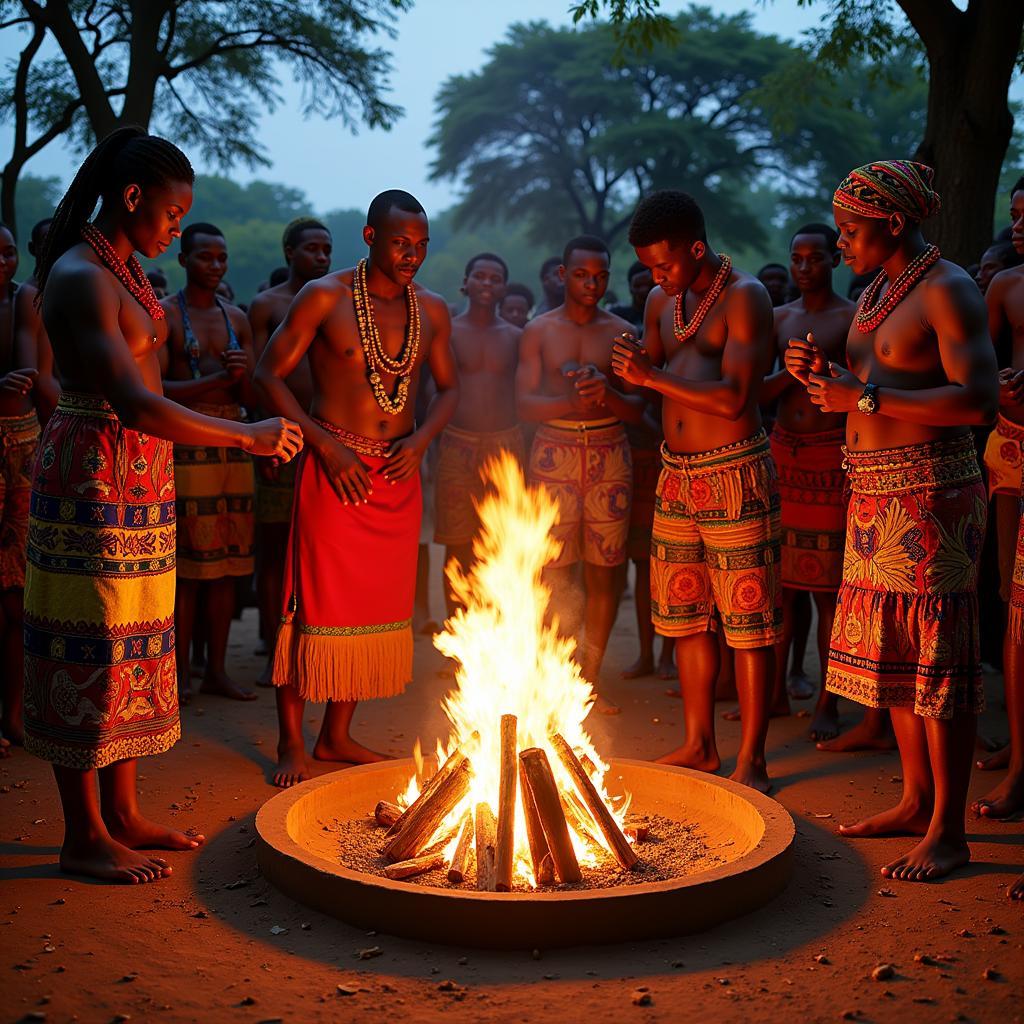Majestic African Giraffe: A Symbol of Grace and Wonder
The African Giraffe, instantly recognizable by its towering height and distinctive patterned coat, is a true icon of the African savanna. From its unique physiology to its cultural significance, this gentle giant captivates the imagination of people worldwide. Let’s delve into the fascinating world of the African giraffe and discover what makes this creature so extraordinary. african giraffe species
A Towering Presence: The Physical Attributes of the African Giraffe
The African giraffe’s most striking feature is undoubtedly its incredible height. Standing up to 19 feet tall, it is the tallest mammal on Earth. This remarkable stature allows it to browse on leaves and buds inaccessible to other herbivores, giving it a distinct advantage in the competitive landscape of the African savanna. Their long necks, surprisingly, contain the same number of vertebrae as a human neck, seven, though each one is significantly elongated. Each leg of an African giraffe can measure up to six feet long, allowing for a graceful, loping gait.
Their patterned coat, unique to each individual, acts as camouflage amongst the dappled sunlight and shadows of the acacia trees they favor. These beautiful patterns vary in color and shape depending on the subspecies, further adding to their unique charm. Atop their heads, both male and female African giraffes possess a pair of ossicones, horn-like structures covered in skin and fur, used in sparring and displays of dominance.
African Giraffe Behavior and Social Dynamics
African giraffes are social animals, living in loose herds called towers, which can range in size and composition. These herds often consist of related females and their offspring, while adult males tend to roam more independently, joining towers temporarily for mating. Communication within the herd is subtle, often involving infrasonic vocalizations and visual displays.
How do African Giraffes Communicate?
While often perceived as silent, African giraffes communicate through various means, including low-frequency rumbles and snorts, often inaudible to the human ear. Their long necks also play a role in visual communication, with postures and movements conveying different signals within the herd.
The African Giraffe in Culture and Art
The African giraffe has long held a place of significance in African cultures. Symbolizing grace, elegance, and farsightedness, it is often depicted in traditional art forms, from rock paintings to intricate carvings. The giraffe’s gentle nature and majestic presence have earned it a place of reverence in many African communities. african giraffe mask meaning Dr. Anika Nkosi, a renowned anthropologist specializing in East African cultures, notes, “The giraffe’s image is interwoven into the very fabric of many African societies, representing a connection to the ancestral past and the spiritual realm.”
Conservation Efforts and the Future of the African Giraffe
Sadly, African giraffe populations have declined significantly in recent decades due to habitat loss, poaching, and human conflict. Various conservation organizations are working tirelessly to protect these magnificent creatures and their habitats. Efforts include establishing protected areas, anti-poaching patrols, and community engagement programs. african giraffe tattoo Professor Charles Mbogo, a leading wildlife conservationist, states, “Protecting the African giraffe is not just about preserving a species; it’s about safeguarding the biodiversity of the African savanna and ensuring a healthy future for generations to come.”
 African Giraffe Conservation Efforts
African Giraffe Conservation Efforts
Conclusion
The African giraffe, a symbol of grace and wonder, remains an integral part of the African landscape. Understanding its unique characteristics, behavior, and cultural significance is crucial to fostering appreciation and supporting conservation efforts to ensure the survival of this majestic creature for future generations. african giraffe sculpture Let’s continue to admire and protect the African giraffe, a true testament to the beauty and diversity of the natural world.
FAQ
- What is the average lifespan of an African giraffe? (Around 25 years in the wild.)
- What do African giraffes eat? (Primarily leaves, buds, and fruits from acacia trees.)
- How fast can an African giraffe run? (Up to 35 miles per hour over short distances.)
- Are African giraffes endangered? (Yes, several subspecies are classified as vulnerable or endangered.)
- How many subspecies of African giraffes are there? (Currently, there are four recognized species with nine subspecies.)
- What is the main predator of African giraffes? (Lions, but also crocodiles and leopards, particularly for young giraffes.)
- How do African giraffes sleep? (They often sleep standing up, but occasionally lie down for short periods.)
Common Questions About African Giraffes:
- Do African Giraffes drink water? Yes, they do drink water, but they can go for extended periods without it due to the moisture content in their diet.
- How high can African Giraffes reach with their necks? Their long necks enable them to reach foliage up to 18 feet high.
Suggested Further Reading:
For more information about other African animals, you can explore african girafcffes animals.
Need help?
Contact us for any assistance: Phone: +255768904061, Email: kaka.mag@gmail.com Or visit us at: Mbarali DC Mawindi, Kangaga, Tanzania. We have a 24/7 customer service team.

